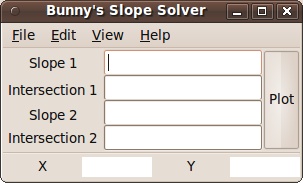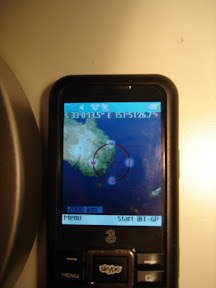This is the laundry list of things I did while creating a mod_tile VMware appliance based on Ubuntu Server 8.04. I've kept descriptions limited but left all the commands in. Let's start installing things...
Useful goodies for compiling source
sudo apt-get build-essential
More goodies for Mapnik + Friends
sudo apt-get install libboost-dev libboost-filesystem-dev libboost-filesystem1.34.1 libboost-iostreams-dev libboost-iostreams1.34.1 libboost-program-options-dev libboost-program-options1.34.1 libboost-python-dev libboost-python1.34.1 libboost-regex-dev libboost-regex1.34.1 libboost-serialization-dev libboost-serialization1.34.1 libboost-thread-dev libboost-thread1.34.1 libicu-dev libicu38 libstdc++5 libstdc++5-3.3-dev python2.5-dev
sudo aptitude install libfreetype6 libfreetype6-dev libjpeg62 libjpeg62-dev libltdl3 libltdl3-dev libpng12-0 libpng12-dev libtiff4 libtiff4-dev libtiffxx0c2 python-imaging python-imaging-dbg proj
sudo aptitude install libcairo2 libcairo2-dev python-cairo python-cairo-dev libcairomm-1.0-1 libcairomm-1.0-dev libglib2.0-0 libpixman-1-0 libpixman-1-dev libpthread-stubs0 libpthread-stubs0-dev ttf-dejavu ttf-dejavu-core ttf-dejavu-extra
sudo aptitude install libgdal-dev python2.5-gdal postgresql-8.3-postgis postgresql-8.3 postgresql-server-dev-8.3 postgresql-contrib-8.3
sudo aptitude install libxslt1.1 libxslt1-dev libxml2-dev libxml2 gdal-bin libgeos-dev libbz2-dev
sudo aptitude install apache2 apache2-threaded-dev apache2-mpm-prefork apache2-utils
sudo aptitude install subversion
This checks out the mapnik source:
svn co svn://svn.mapnik.org/trunk mapnik-src
Let's build mapnik with several specific locations included.
cd mapnik-src
python scons/scons.py PYTHON=/usr/bin/python PGSQL_INCLUDES=/usr/include/postgresql PGSQL_LIBS=/usr/lib/postgresql BOOST_INCLUDES=/usr/include/boost BOOST_LIBS=/usr/lib
sudo python scons/scons.py install PYTHON=/usr/bin/python PGSQL_INCLUDES=/usr/include/postgresql PGSQL_LIBS=/usr/lib/postgresql BOOST_INCLUDES=/usr/include/boost BOOST_LIBS=/usr/lib
And prepare a few things for the mapnik rendering...
svn co http://svn.openstreetmap.org/applications/rendering/mapnik/
cd ~/mapnik
wget http://tile.openstreetmap.org/world_boundaries-spherical.tgz
tar -xpjf world_boundaries-spherical.tgz
unzip processed_p.zip
cp coastlines/* world_boundaries/
rmdir coastlines
Time to setup postgres. I have the intentions of running renderd (the mod_tile rendering engine) under whatever user Apache is running as, so I'll setup postgres to allow the OSM user to authenticate via password. I'm not a postgres expert, so if you see me doing something totally foolish, let me know.
sudo vi /etc/postgresql/8.3/main/pg_hba.conf
And edit the authentication part as so:
# Database administrative login by UNIX sockets
local all postgres ident sameuser
local all osm password sameuser
And now to actually configure postgres for the OSM data
sudo su postgres
createuser osm
createdb -E UTF8 -O osm gis
createlang plpgsql gis
psql -d gis -f /usr/share/postgresql-8.3-postgis/lwpostgis.sql
echo "ALTER TABLE geometry_columns OWNER TO osm; ALTER TABLE spatial_ref_sys OWNER TO osm;" | psql -d gis
echo "alter user osm with password 'columbia';" | psql
sudo /etc/init.d/postgresql-8.3 restart
Now, let's render a sample image. Edit set-mapnik-env by changing the DB to 'gis', the username to 'osm', and the password to 'columbia'
cd mapnik
source ./set-mapnik-env
./customize-mapnik-map >osm.xml
./generate_image.py
If you get an error about it not finding a lib, make sure to do a...
sudo ldconfig
You should have an image called 'image.png' in the mapnik directory, and it should look distinctly like the UK.
svn co http://svn.openstreetmap.org/applications/utils/export/osm2pgsql
cd osm2pgsql
make
Ok, that was easy. Let's load some data. I've used a sample snippit from Sydney in /home/osm to illustrate this.
./osm2pgsql -W -d gis ../sydney.osm
Type in the password used for postgres ('columbia')
I'll now check that the data is accessible by editing generate_image.py with the correct coords for Sydney.
ll = (150.29, -34.04, 151.25, -33.36)
Time to get mod_tile up and running.
sudo apt-get install libagg-dev
svn co http://svn.openstreetmap.org/applications/utils/mod_tile
cd mod_tile
Depending on the revision of mod_tile you are using, you are going to have to edit the source before compiling. The two files you need to read through are the Makefile and render_config.h. I change the apxs and apachectl locations to the correct place (lines 2, 13 and 14). Since I did it on a x86 image, I took out any references to lib54 (line 33). In render_config.h, I made the following changes:
Line 8
#define WWW_ROOT "/var/www"
Line 23
#define OSM_XML "/home/osm/mapnik/osm.xml"
Removed references to lib64 on lines 26 and 29.
make && make install
Set it up as a module for apache by creating a file in /etc/apache/conf.d called 'mod_tile' and putting in there:
LoadModule tile_module /usr/lib/apache2/modules/mod_tile.so
Created a folder called 'osm_tiles2' and 'direct' in /var/www, and make sure they are writable by whatever apache runs as (likely www-data). Restart apache.
From here, I created a file that automatically zooms in on the map I just created -- you can check it out here. Start the renderd process as www-data, and browse to the sample file.
cd ~/mod_tile
sudo su www-data
./renderd
By now you should have a working mod_tile/OSM setup. After a change and tune a few things on the Ubuntu image I'll make the VMware image available for download. I can't wait to do some OSM projects!





